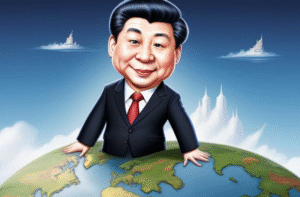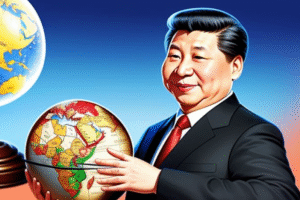$SPX $DOWI #StockMarket #PPIReport #EconomicIndicators #Investing #FinanceNews #WallStreet #MarketTrends #EconomicData #DowJones #Nasdaq #SAndP500
Why Did Stocks Tumble After the Latest PPI Report? Uncover the Impact!
In recent trading sessions, the financial landscape witnessed a noticeable dip across major indices, spotlighting the latest Producer Price Index (PPI) report as a pivotal influence. The S&P 500 Index, a barometer for the overall U.S. stock market, recorded a downturn of 0.24%, while the stalwart Dow Jones Industrials Index fell by 0.36%. Not far behind, the tech-heavy Nasdaq 100 Index saw a decline of 0.11%. This downward trajectory extended into the futures market, with September E-mini S&P futures and Nasdaq futures decreasing by 0.39% and 0.42%, respectively.
Deciphering the PPI’s Role in Market Movements
The Producer Price Index is an essential economic indicator that measures the average changes in selling prices received by domestic producers for their output. A ‘hot’ PPI report, indicating higher than expected inflation at the production level, often stirs concerns about rising consumer prices in the near future. Consequently, such data can lead to heightened volatility in the stock markets as investors recalibrate their expectations for interest rates and corporate earnings.
The recent PPI data suggested an unexpected uptick in production costs, which could signal forthcoming pressures on profit margins for companies within the S&P 500, Dow Jones, and Nasdaq indices. Investors, wary of inflationary pressures, might be adjusting their portfolios to hedge against potential declines in purchasing power and profitability.
Market Reactions and Strategic Adjustments
Following the release of the PPI report, market sentiment took a cautious turn, as evidenced by the pullback in major stock indices. For investors, the key concern revolves around the Federal Reserve’s response to inflation signals, which could include tightening monetary policy more aggressively than previously anticipated. Such measures generally result in higher borrowing costs and can dampen investment and spending across economic sectors.
Investors and traders are now faced with the task of navigating this uncertain terrain. Strategic adjustments might include shifting towards sectors traditionally seen as safe havens during periods of economic turbulence, such as utilities and consumer staples, or reconsidering the weight of growth-oriented tech stocks in their portfolios.
Looking Ahead: Implications for Future Trading Sessions
As the market absorbs the implications of the latest PPI report, upcoming trading sessions will likely be marked by careful scrutiny of any further economic releases that could indicate inflation trends. Additionally, corporate earnings reports in the coming weeks will be particularly telling, as analysts and investors gauge the real-world impacts of increased production costs on company profits.
For ongoing updates and expert analysis on how economic indicators like the PPI influence the stock market, keep an eye on our dedicated stocks news section.
In conclusion, the stock market’s response to the PPI report serves as a reminder of the intricate dance between economic data and investor behavior. Understanding these dynamics is crucial for anyone involved in the financial markets, whether as a seasoned investor or a casual observer. As always, staying informed and agile in response to new data will be key to navigating these choppy waters.











Comments are closed.